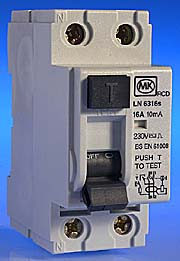I know this has been covered countless times before on this forum and yes I have done a search but my question, I think, is a little more complex.
My CU is full, there is no space to fit any more MCB's
therefore, I wish to supply the shed using a fused spur from the kitchen ring (or possibly the heating circuit which is a gas combi boiler so should be very low load)
I will take the supply into the shed using 2.5mm^2 SWA.
At this point, I was planning on fitting a small CU with a 6A MCB for the lighting circuit and a 10A RCBO for the sockets. My reason for using a 10A RCBO is that it should trip before the MCB/RCD on the main CU in the flat protecting my freezer. The last thing I wanty is the electrics in my shed tripping at 9am and me coming in at 6pm to find 150quids worth of frozen food has defrosted.
Is this an acceptable way of connecting the power to the shed?
If not, is it possible to move the RCD in the CU so that instead of having 2 non protected and 3 protected, I have 3 non protected and 2 protected? that would be the ideal option as I could then transfer the heatingcircuit to a fused spur and use the MCB in the CU for the shed?
My CU is full, there is no space to fit any more MCB's
therefore, I wish to supply the shed using a fused spur from the kitchen ring (or possibly the heating circuit which is a gas combi boiler so should be very low load)
I will take the supply into the shed using 2.5mm^2 SWA.
At this point, I was planning on fitting a small CU with a 6A MCB for the lighting circuit and a 10A RCBO for the sockets. My reason for using a 10A RCBO is that it should trip before the MCB/RCD on the main CU in the flat protecting my freezer. The last thing I wanty is the electrics in my shed tripping at 9am and me coming in at 6pm to find 150quids worth of frozen food has defrosted.
Is this an acceptable way of connecting the power to the shed?
If not, is it possible to move the RCD in the CU so that instead of having 2 non protected and 3 protected, I have 3 non protected and 2 protected? that would be the ideal option as I could then transfer the heatingcircuit to a fused spur and use the MCB in the CU for the shed?





